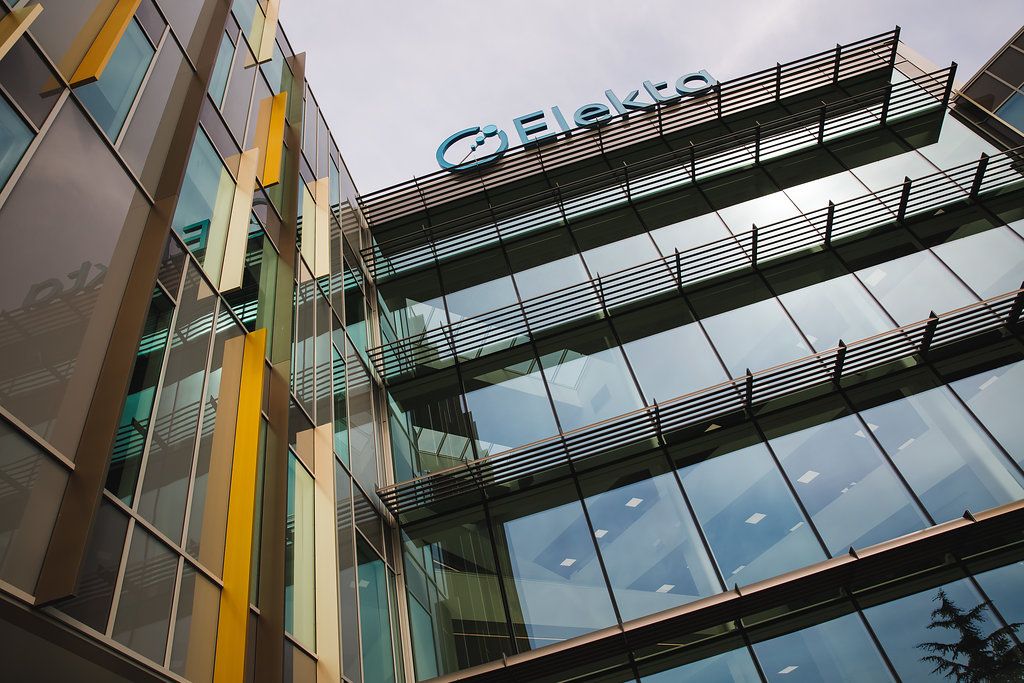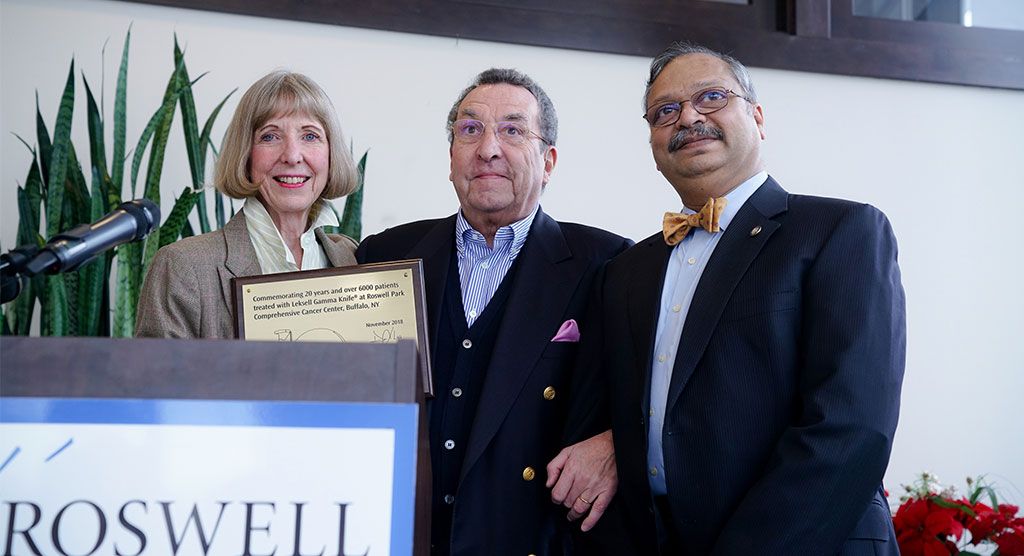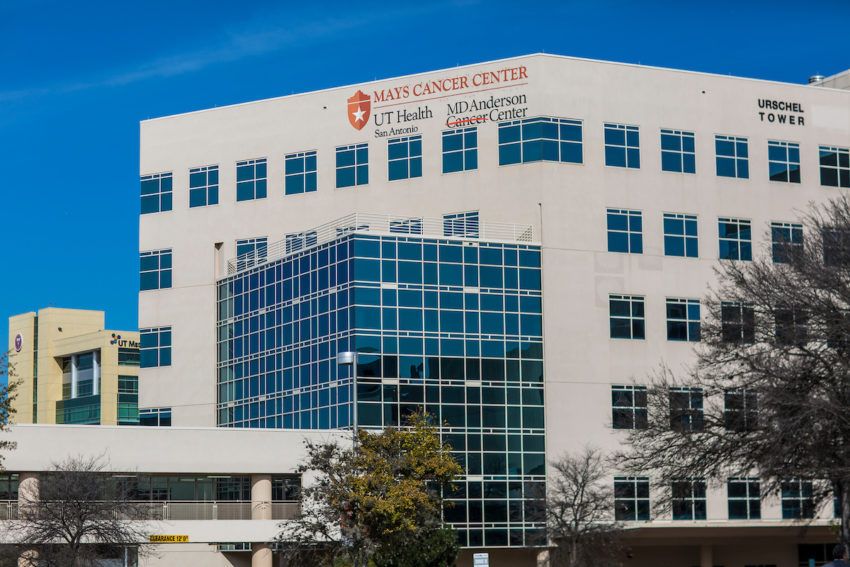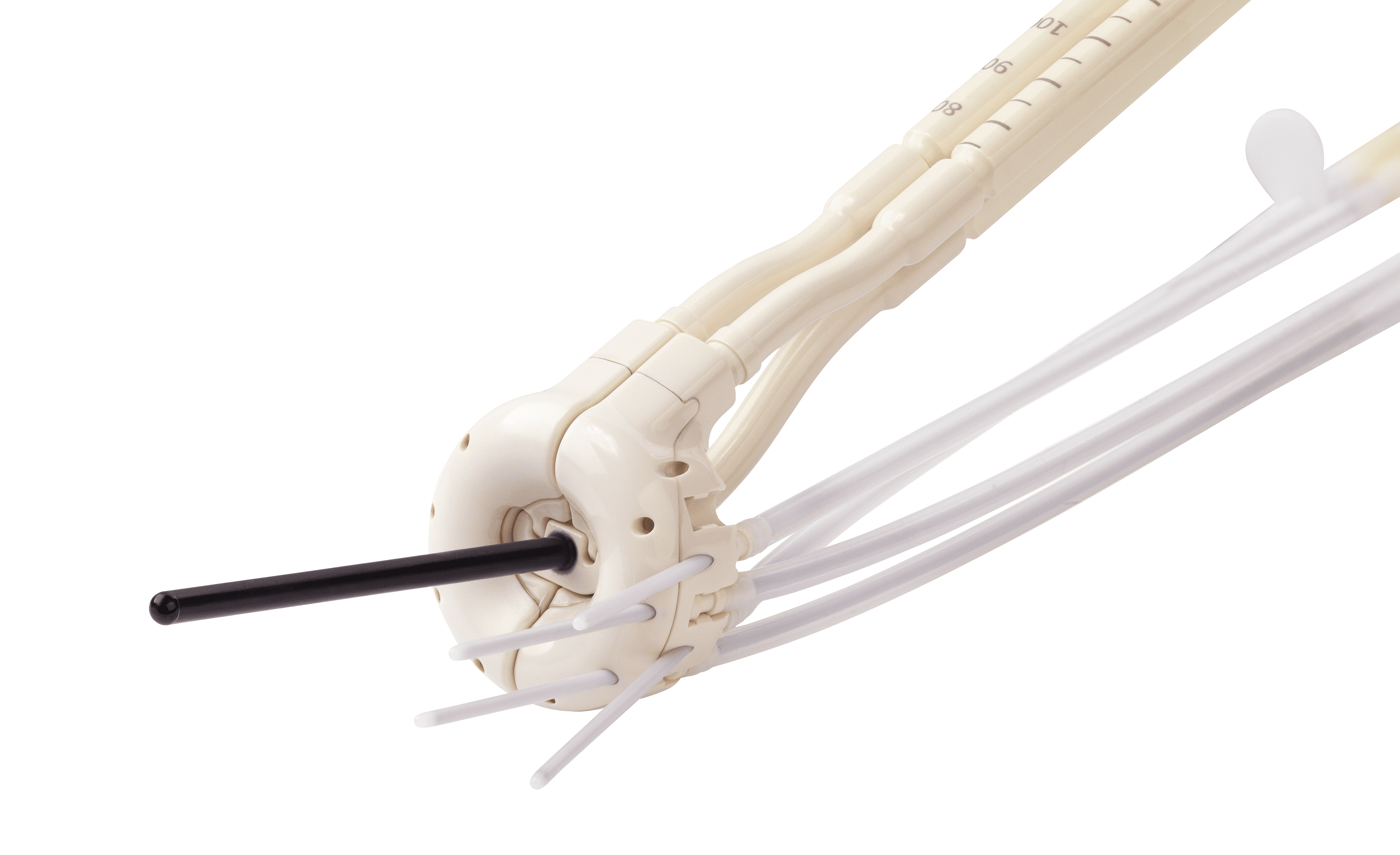Early clinical experience with Elekta Unity in Germany

University Hospital Tübingen discusses being the first center in Germany to install and go clinical with Elekta Unity
Founded in 1805, University Hospital Tübingen is a large teaching hospital in central Baden-Württemberg, Germany. The hospital’s Comprehensive Cancer Clinic (CCC) Tübingen-Stuttgart is a center of excellence in the National Program of Interdisciplinary Oncology and the Department of Radiation Oncology is one of the leading treatment centers for radiation therapy in Germany, treating around 2,500 new patients every year. The department treats all radiation therapy indications, using a comprehensive range of advanced techniques, and has an extensive research program, with around 10% of patients involved in clinical trials.
The Department of Radiation Oncology at Tübingen has specific expertise in image guided radiation therapy (IGRT) and special research interest in the biological response-based individualization of treatments using imaging biomarkers.
In 2017, the German Research Council (DFG) awarded funding to University Hospital Tübingen to scientifically evaluate a hybrid machine for MR/RT, allowing them to become the first center in Germany to install the Elekta Unity high field (1.5T) MR-linac.
“We specified Elekta Unity in our original grant application because of the imaging capabilities of 1.5T MR,” comments Professor Dr Daniel Zips, Medical Director, CCC Tübingen-Stuttgart. “Our proposal was to investigate the integration of functional MR in adaptive, individualized radiotherapy. The high-field Elekta MR-linac is the technology that will allow us to further our research in this area.”
“The reference for our research is offline MR imaging using 1.5T and 3T scanners,” he explains. “Offline imaging has limitations in an adaptive radiotherapy workflow, such as access, patient logistics and workflow hurdles including the transfer and segmentation of images. We needed online, real-time, diagnostic quality MR imaging within the treatment workflow to allow daily biological response-based adaptive radiotherapy. Elekta Unity is the only system that can provide this.”
“We needed online, real-time, diagnostic quality MR imaging within the treatment workflow. Elekta Unity is the only system that can provide this.”
“Another significant advantage to having Elekta Unity is that we are now members of the international Elekta MR-linac consortium,” Professor Zips adds. “This has allowed us to intensify our research collaborations with leaders in the field of MR-RT, to be involved in gathering evidence within the consortium’s specific Tumor Site Groups (TSG), and to benefit from the collective experiences and findings of the worldwide Elekta Unity community.”
“As consortium members, we benefit from the collective experiences of the worldwide Elekta Unity community.”
Installation of Elekta Unity at Tübingen
Following preparation of an existing bunker, the installation of the MR-linac began with the delivery of the magnet in September 2017. In June 2018 (when Elekta Unity received CE marking), the first patients at Tübingen were imaged on Elekta Unity.
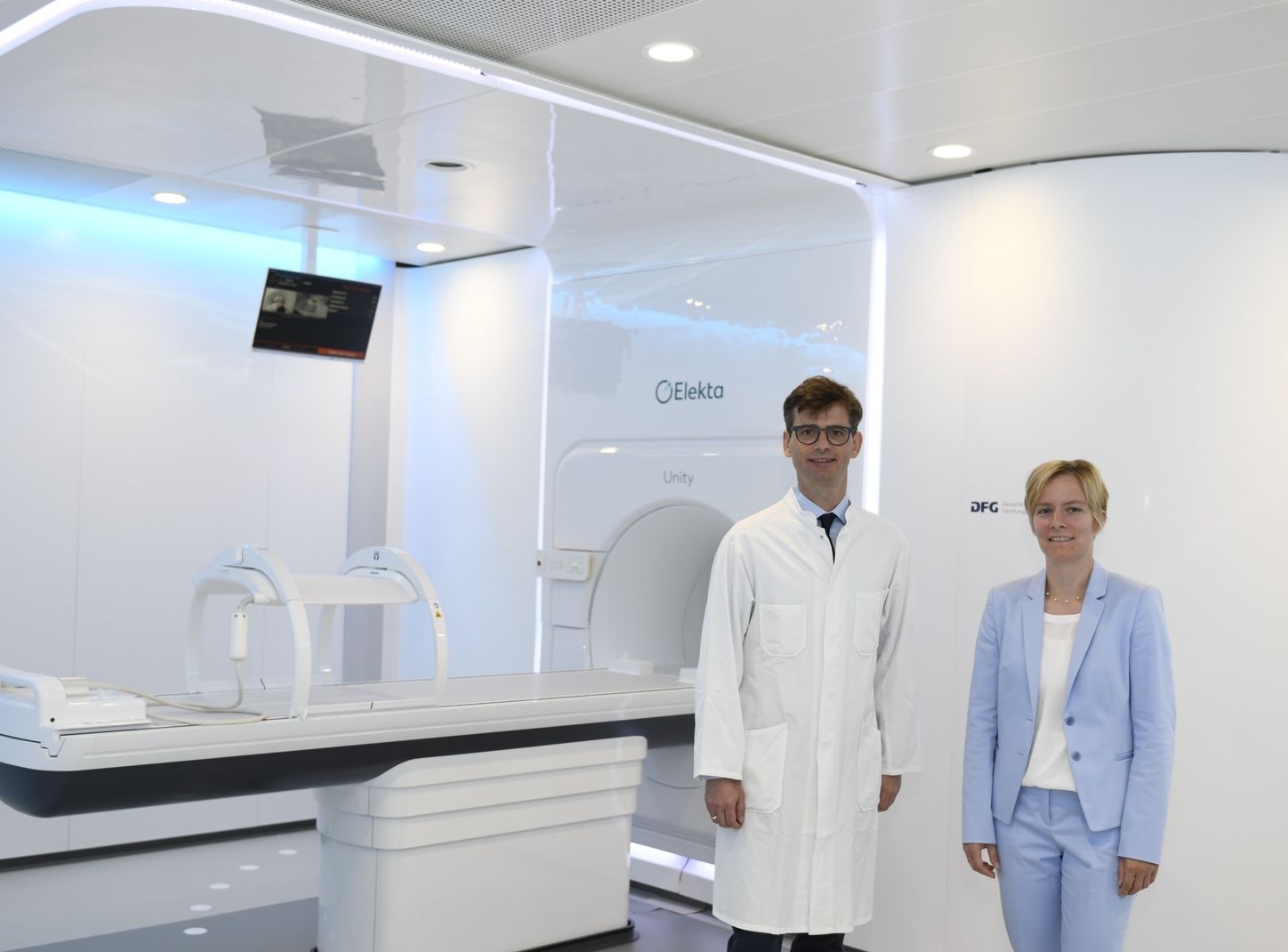
“Prior to treating patients on Elekta Unity we performed some imaging studies, which we used for proof of concept treatment planning,” says Professor Zips. “We already had the Monaco® treatment planning console for Elekta Unity for more than a year and so we had gained a lot of planning experience with existing data sets. We were able to develop class solutions and to perform some plan comparisons, which coworkers of Professor Daniela Thowarth, chair of the research section Biomedical Physics at the Department of Radiation Oncology Tübingen, presented at ESTRO 2017 and 2018, and published in 20181. We are very familiar with the workings of Monaco, which was developed from our in-house software Hyperion, and this is about to be our main treatment planning system in the department.”
On-site staff training took place in August and September 2018. In addition, key members of the clinical and physics teams visited Elekta Unity installations at the Netherlands Cancer Institute-Antoni van Leeuwenhoek Hospital (NKI-AVL) and the University Medical Center (UMC) Utrecht in the Netherlands. The core team for Elekta Unity at Tübingen currently consists of four radiation oncologists, four physicists and four RTTs in order to provide vacation cover and a constant clinical service. Further training will gradually roll out expertise further throughout the department.
Commissioning of Elekta Unity took place in September 2018 and the first patient was treated on the 20 September 2018.
“We had a lot of support from NKI-AVL and UMCU, as well as from Elekta and Philips who were on site for our first few fractions.”
“We had a lot of support from NKI-AVL and UMCU, as well as from Elekta and Philips who were on site for our first few fractions,” says Professor Zips. “After that we felt confident to run with it, with ongoing support from Elekta. It’s a great feeling to be among the first in the world to use this technology. These are very exciting times.”
Pretreatment planning and QA
Patients to be treated on Elekta Unity as part of the feasibility study at Tübingen are selected on clinical grounds, where online MR imaging and plan adaptation offer advantages in individual cases, and they must be eligible for MR imaging. The capabilities of the system and the details of their treatment are explained and their consent to be part of a study is obtained.
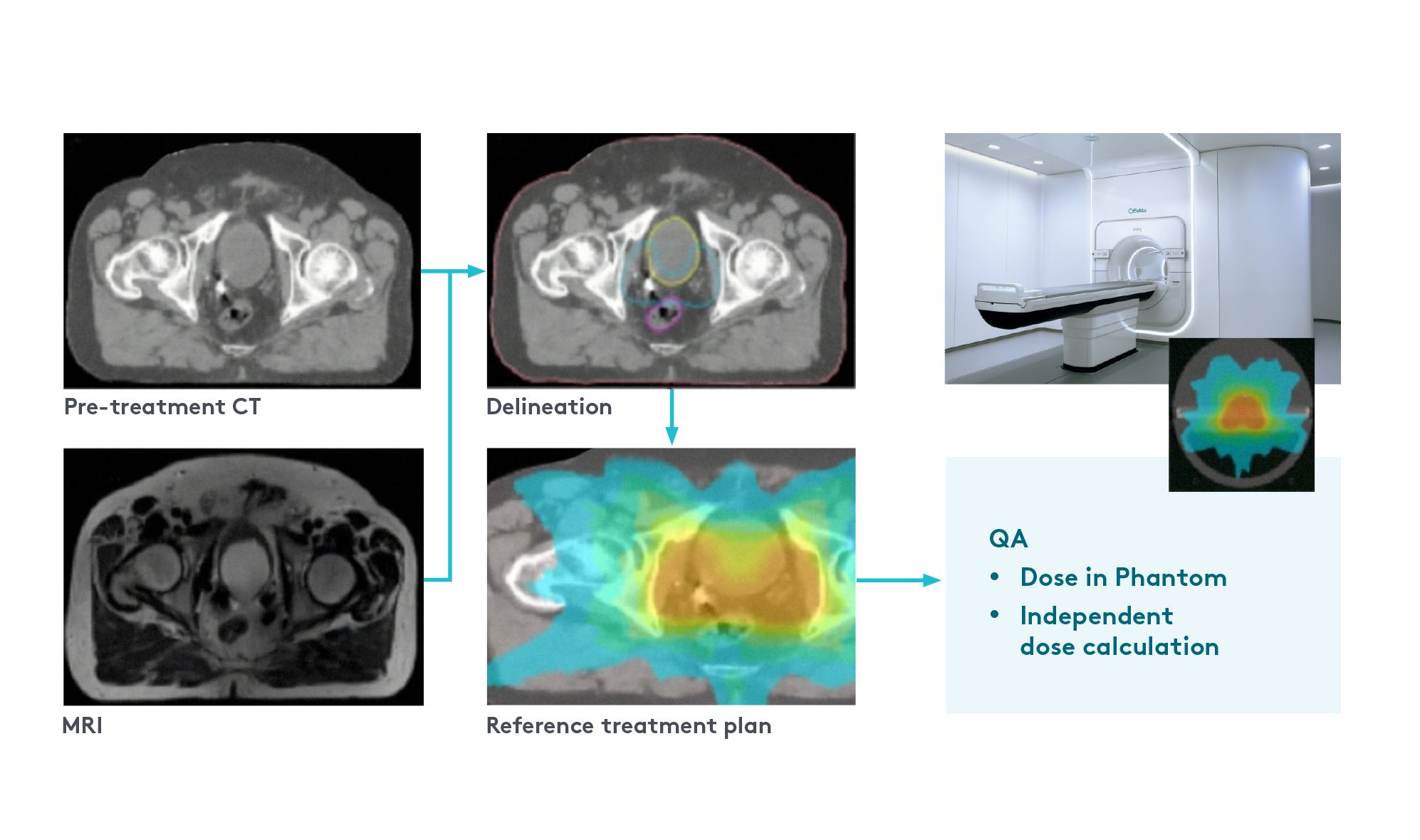
A pretreatment planning CT scan is acquired using the same indexed table top and MR-compatible accessories that are used with Elekta Unity. The MR-linac team is present for this as they are familiar with the indexing, positioning devices and documentation required. The team then takes the patient for MR simulation imaging. Delineation is performed using CT and MR data and a reference treatment plan is created using Monaco (figure 1). Pretreatment quality assurance is performed by delivering this reference plan to a phantom prior to the first fraction and measuring the delivered dose distribution. The reference plan is also checked using in-house independent dose calculation software.
“At the moment, during the ramp up phase, we prepare two plans for each patient for comparison – a Monaco step and shoot IMRT plan for Elekta Unity, and a VMAT plan, which is prepared using our in-house TPS software, Hyperion (a Monte Carlo-based predecessor to Monaco),” says Professor Zips. “This is to check that the Elekta Unity plan quality is equivalent to the VMAT plan.”
The Elekta Unity online adaptive workflow
Before each fraction, an MR check is performed before the patient enters the Elekta Unity treatment room. They are then positioned on the treatment table before a daily 3D MR image is acquired and automatically registered to the reference image. The contours are checked and the plan is adapted according to any visible changes while the patient remains on the treatment table (figure 2).
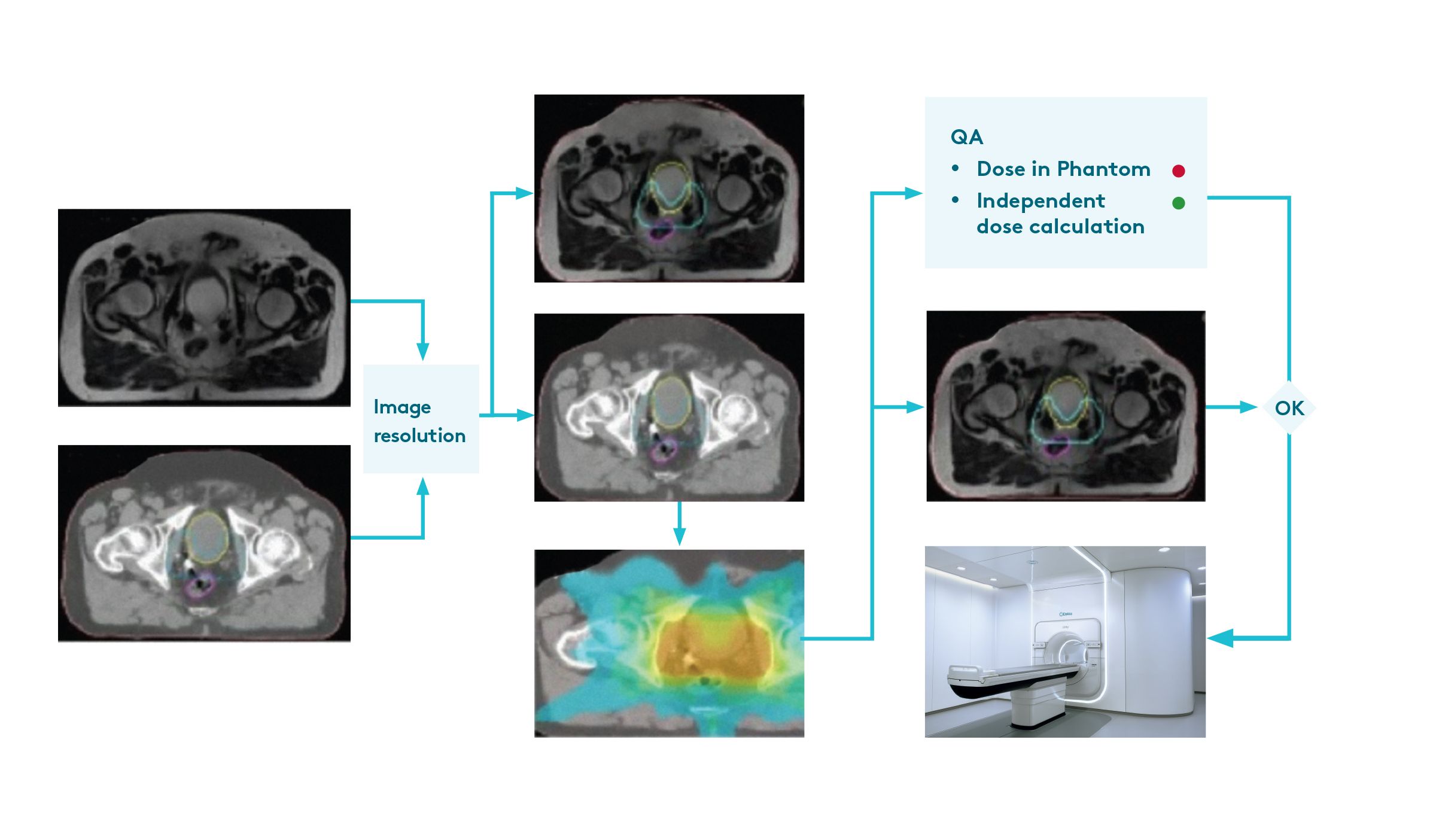
Elekta Unity supports two online adaptive workflows. In ‘adapt to position’, the reference dose is shifted to the daily target position. This is an efficient workflow in terms of time and expertise required in the online environment. In the ‘adapt to shape’ workflow, the dose is adjusted to conform to the daily deformed anatomical structures.
“We feel very comfortable with the ‘adapt to position’ workflow.”
“We feel very comfortable with the ‘adapt to position’ workflow,” comments Professor Zips. “There is a dosimetric difference with ‘adapt to shape’, but it will depend on individual cases whether this will have a consequence on the constraints for the patient. There will be a trade-off between dosimetric advantage and the extra time required for the patient on the treatment table with ‘adapt to shape’. We decided pragmatically to gain experience with ‘adapt to position’ and to slowly introduce ‘adapt to shape’ where appropriate.”
As the patient is on the treatment table, the adapted plan is checked automatically using the department’s independent dose calculation software. Then, the dose is delivered to the patient. During treatment delivery, simultaneous motion monitoring is performed using live 2D MR images acquired in up to three planes. Dose delivery can be paused if target position exceeds preset limits.
Providing the patient is comfortable, a post treatment 3D MR image is acquired before they get down from the treatment table. Post treatment quality assurance is performed after each treatment to check agreement between the calculated and measured dose.
Currently, four staff members are present for each Elekta Unity treatment. A radiation oncologist and a medical physicist, both familiar with the treatment plan, and two RTTs – one managing the MR and patient communication, and the other managing the treatment control system. This may change in the future as the team gains experience.
From the MR check until the patient leaves the Elekta Unity treatment room, 30-40 minutes are required for the ‘adapt to position’ workflow, at present. This currently allows up to five patients to be treated on Elekta Unity per day at Tübingen, with a half-day dedicated to treatment delivery. It is hoped that this number will increase to around 10 patients per day by early 2019.
An expanding clinical program
“We are now in the first, exploratory phase of a prospective feasibility study for all Elekta Unity patients,” says Professor Zips. “Initially, we focus on gaining experience with the imaging, treatment and quality assurance workflows. Then, in the second phase, we will begin clinical protocols to investigate regular functional imaging response assessment on Elekta Unity, and correlation with clinical outcome. This will be performed in parallel with weekly offline reference MR imaging, either 1.5T or 3T, to validate the findings from daily MR imaging on Elekta Unity.”
“We want to take advantage of the very good imaging quality of Elekta Unity to enhance and expand online adaptive protocols.”
“Prior to installing Elekta Unity, we already had adaptive protocols in place for certain anatomies, such as prostate and head and neck, using offline MR imaging,” Professor Zips continues. “We want to take advantage of the very good imaging quality of Elekta Unity to enhance and expand online adaptive protocols.”
